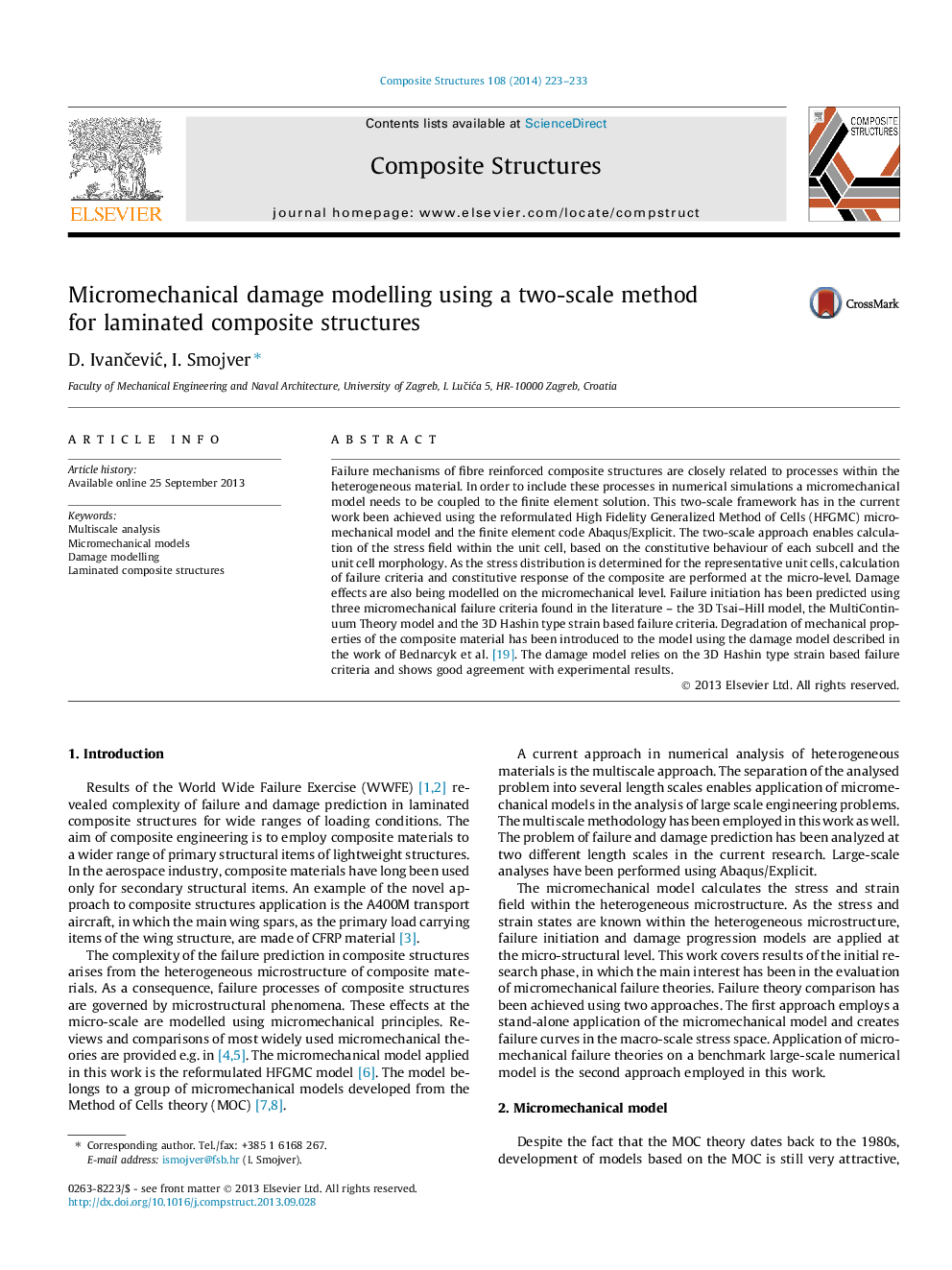| Article ID | Journal | Published Year | Pages | File Type |
|---|---|---|---|---|
| 251825 | Composite Structures | 2014 | 11 Pages |
Failure mechanisms of fibre reinforced composite structures are closely related to processes within the heterogeneous material. In order to include these processes in numerical simulations a micromechanical model needs to be coupled to the finite element solution. This two-scale framework has in the current work been achieved using the reformulated High Fidelity Generalized Method of Cells (HFGMC) micromechanical model and the finite element code Abaqus/Explicit. The two-scale approach enables calculation of the stress field within the unit cell, based on the constitutive behaviour of each subcell and the unit cell morphology. As the stress distribution is determined for the representative unit cells, calculation of failure criteria and constitutive response of the composite are performed at the micro-level. Damage effects are also being modelled on the micromechanical level. Failure initiation has been predicted using three micromechanical failure criteria found in the literature – the 3D Tsai–Hill model, the MultiContinuum Theory model and the 3D Hashin type strain based failure criteria. Degradation of mechanical properties of the composite material has been introduced to the model using the damage model described in the work of Bednarcyk et al. [19]. The damage model relies on the 3D Hashin type strain based failure criteria and shows good agreement with experimental results.
